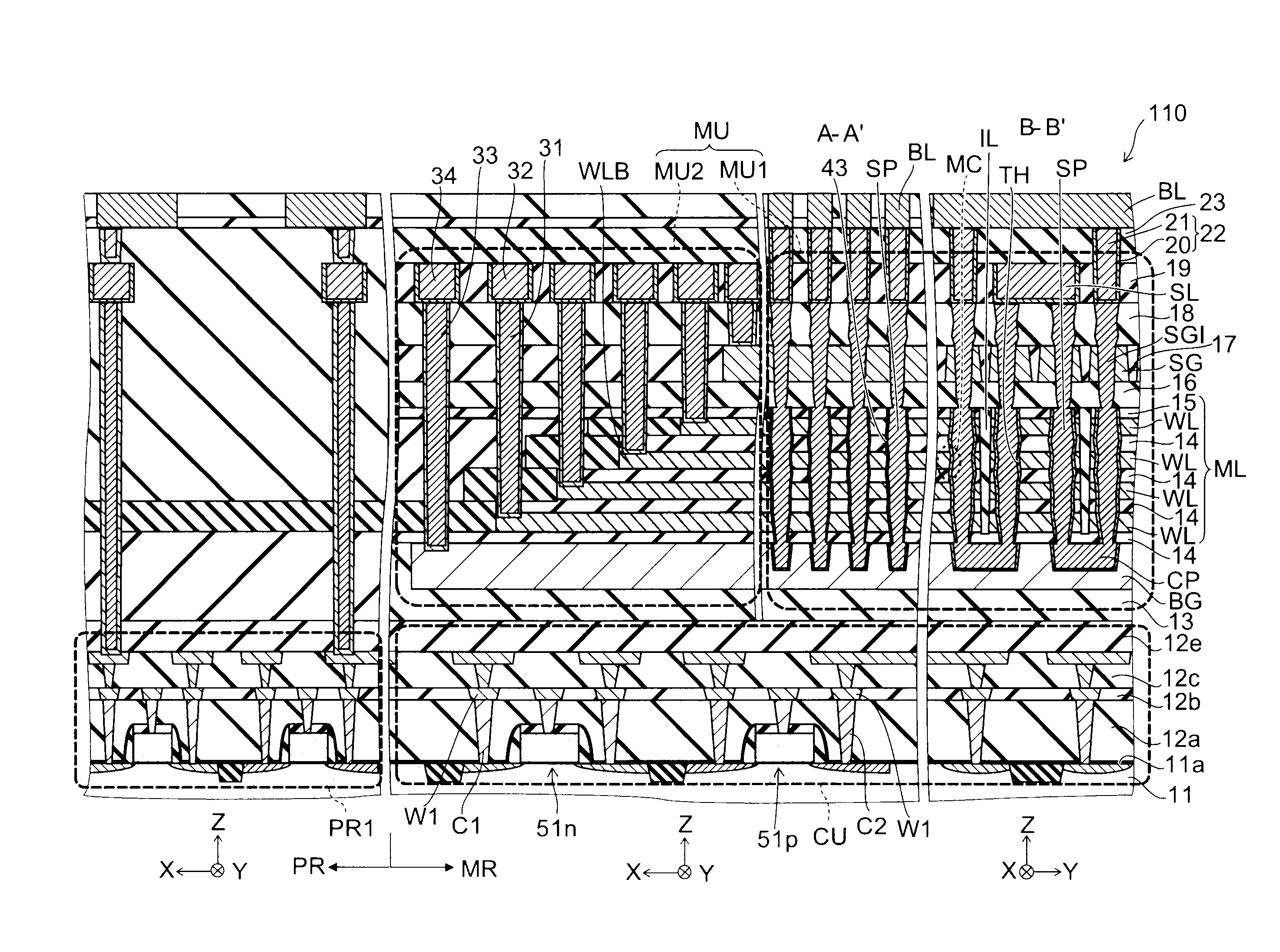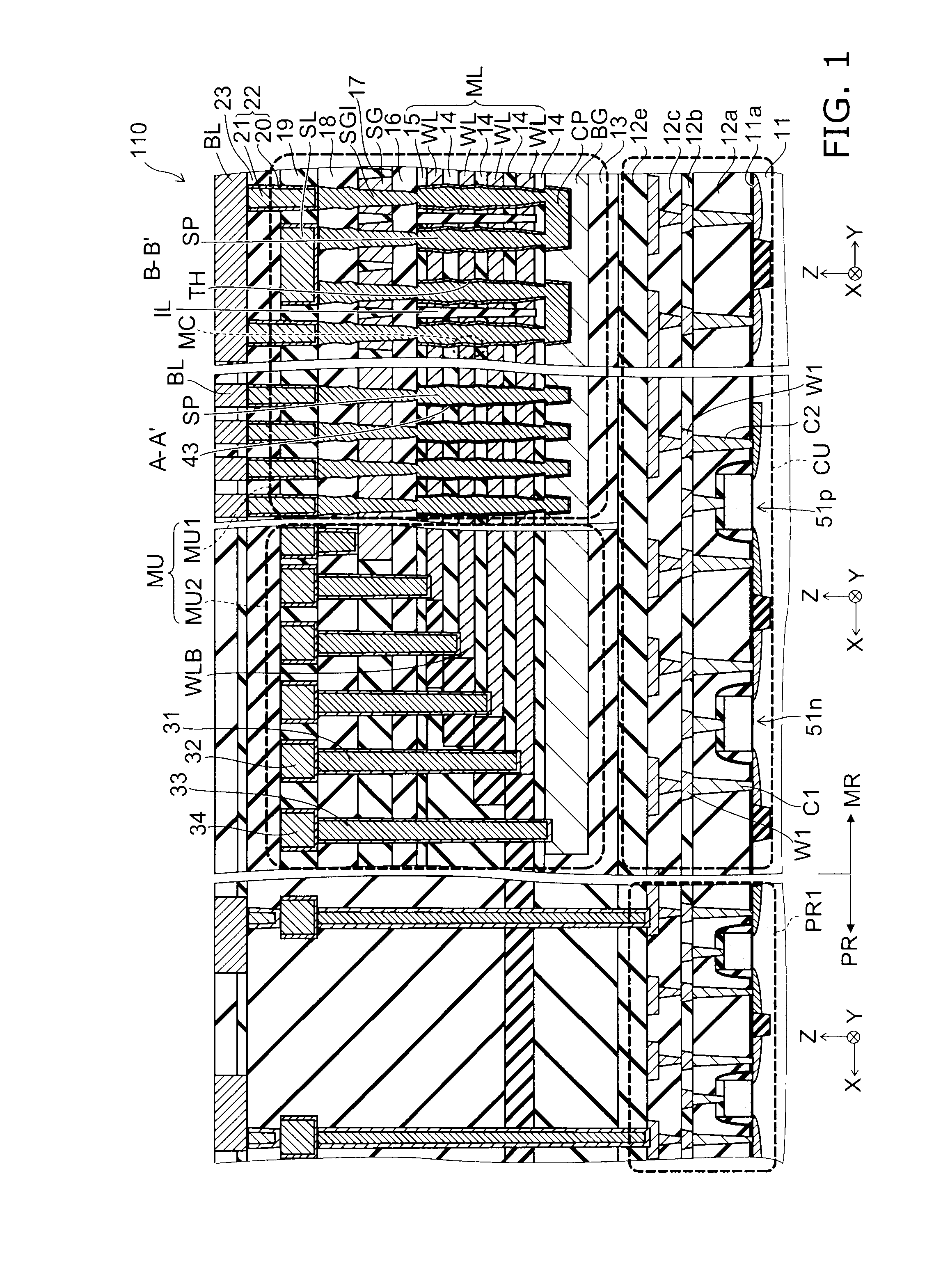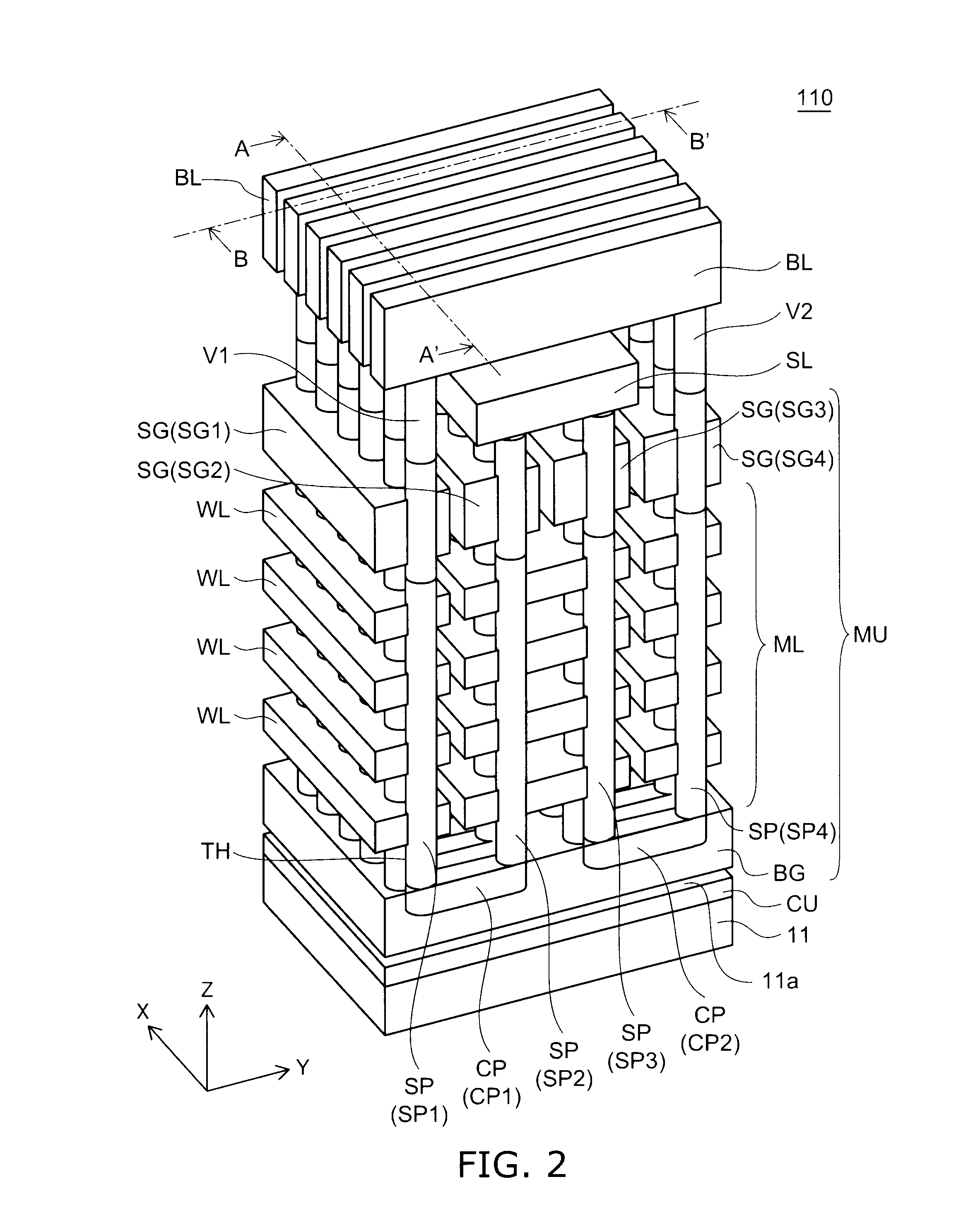Nonvolatile semiconductor memory device and method for manufacturing same
a semiconductor memory and non-volatile technology, applied in semiconductor devices, semiconductor/solid-state device details, electrical devices, etc., can solve the problems of increasing the difficulty of achieving the effect of achieving the effect of achieving the effect of achieving the effect of achieving the effect of achieving the effect of achieving the effect of achieving the effect of achieving the effect of achieving the effect of achieving the effect of achieving the effect of achieving the effect of achieving the effect of achieving the effect o
- Summary
- Abstract
- Description
- Claims
- Application Information
AI Technical Summary
Problems solved by technology
Method used
Image
Examples
first embodiment
[0027]FIG. 1 is a schematic cross-sectional view illustrating the configuration of a nonvolatile semiconductor memory device according to a first embodiment of the invention.
[0028]FIG. 2 is a schematic perspective view illustrating the configuration of the nonvolatile semiconductor memory device according to the first embodiment of the invention.
[0029]For easier viewing of the drawing in FIG. 2, only the conductive portions are illustrated, and the insulating portions are omitted.
[0030]A nonvolatile semiconductor memory device 110 according to the first embodiment of the invention is a three dimensional stacked flash memory.
[0031]As illustrated in FIG. 1, the nonvolatile semiconductor memory device 110 includes a semiconductor substrate 11 made of, for example, monocrystalline silicon.
[0032]A memory array region MR and a peripheral region PR are set in the semiconductor substrate 11 of this specific example. Memory cells are formed in the memory array region, and the peripheral regi...
second embodiment
[0146]FIG. 11 is a flowchart illustrating a method for manufacturing a nonvolatile semiconductor memory device according to a second embodiment of the invention.
[0147]FIGS. 12A and 12B are schematic cross-sectional views in order of the processes, illustrating the method for manufacturing the nonvolatile semiconductor memory device according to the second embodiment of the invention.
[0148]FIG. 13 is a schematic cross-sectional view in order of the processes, continuing from FIG. 12B.
[0149]In the method for manufacturing the nonvolatile semiconductor memory device according to this embodiment, first, the first transistor 51n and the second transistor 51p are formed on the major surface 11a of the semiconductor substrate 11, where the first transistor 51n includes the first source region 53n of the first conductivity type (e.g., the n-type) and the first drain region 54n of the first conductivity type, and the second transistor 51p includes the second source region 53p of the second c...
PUM
 Login to View More
Login to View More Abstract
Description
Claims
Application Information
 Login to View More
Login to View More - R&D
- Intellectual Property
- Life Sciences
- Materials
- Tech Scout
- Unparalleled Data Quality
- Higher Quality Content
- 60% Fewer Hallucinations
Browse by: Latest US Patents, China's latest patents, Technical Efficacy Thesaurus, Application Domain, Technology Topic, Popular Technical Reports.
© 2025 PatSnap. All rights reserved.Legal|Privacy policy|Modern Slavery Act Transparency Statement|Sitemap|About US| Contact US: help@patsnap.com



